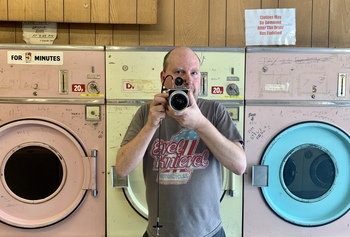
Artist Focus: Richard Heeps
We met Richard Heeps at our first fairs ten years ago and were immediately struck by the timelessness, humour, and deep colours of his whimsical work. His art is universal in that it conveys both nostalgia and hope, movement and stillness, travel and familiarity. He is a film-based photographer and uses vintage analogue cameras: "I have my own colour darkroom where I make my prints. I consider myself to have three studios, the external studio wherever I may be shooting, the darkroom where I make my prints, and my home studio where I do the post-production, where they are mounted and framed. I have always wanted my work to be accessible and affordable without compromising quality and doing it all in-house, I am in control of each step to achieve that."
The British photographer is drawn to colour: "I am a kid from the 1960s, the decade when the world changed from black and white to colour. The colour balance wasn’t quite right though, it was an over the top technicolour. I was brought up in an area where there were American military bases creating a crossover in culture which was a huge inspiration. When I was a young artist in the mid 80s, I was inspired to go against the tradition of black and white photography. In the late 80s there was so much change in Britain I felt it important to capture it which is my series ‘Ordinary Places’ in which colour is very important to convey the story. Looking at my work over time, colour often conveys a sense of place within each series."
His key themes are therefore a sense of place, a journey, leapfrogging time where the future and the past are blurred. The pictures are not individual, they are a set all telling a story. "Colour is very important in the work and it is probably my signature, I use it to seduce the audience, to draw them in. I cross over between classical, conceptual, and pop art, but the use of colour ties them all to me. Whilst my subject matter varies, there is always a link from one picture to another."
See the works of Richard Heeps
